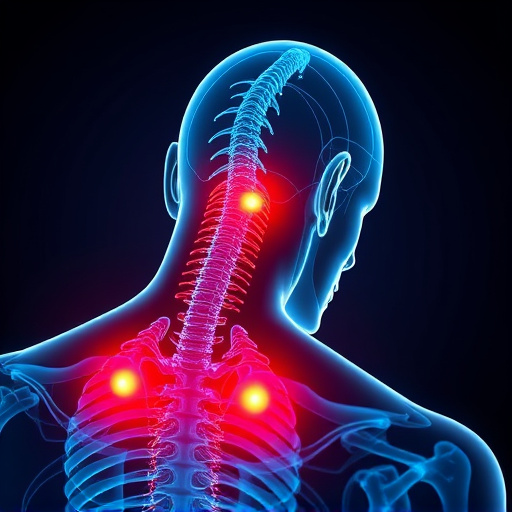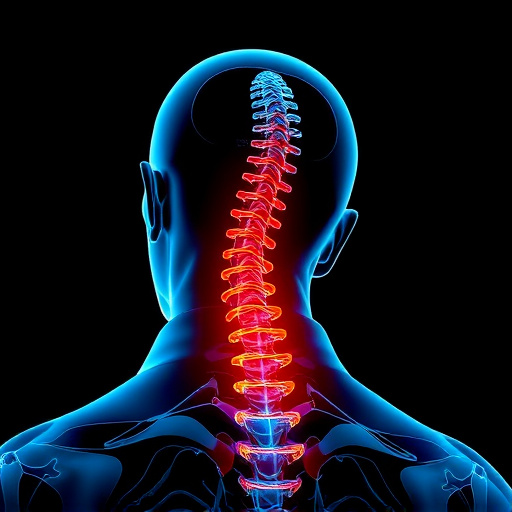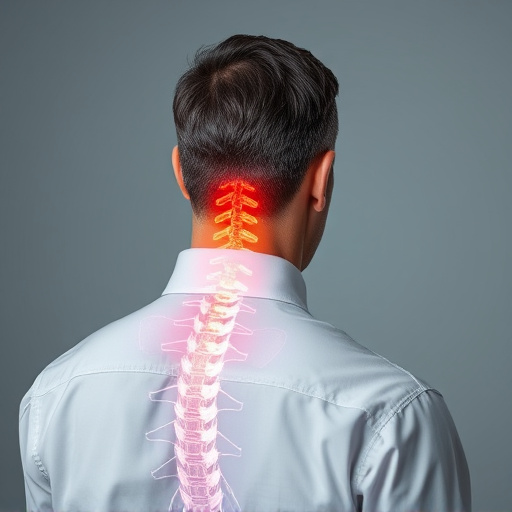Neck and back pain relief is a pressing global issue, affecting millions. Effective management combines therapeutic movement therapy with rehabilitation exercises targeting specific causes like poor posture and nerve compression. Holistic approaches include tailored stretching, strengthening, and mindfulness practices to improve mobility, reduce inflammation, and empower self-care. Personalized exercise routines guided by physical therapists offer lasting solutions, enhancing muscle strength, posture, flexibility, and mental well-being while reducing reliance on medication. Proactive lifestyle adjustments are crucial for sustained neck and back pain relief.
Neck and back pain is a prevalent issue, affecting millions globally. Understanding its causes and impact is crucial for effective management. This article explores rehabilitation exercises and therapeutic movement therapy as powerful tools for achieving lasting neck and back pain relief. We delve into the science behind these approaches, offering insights on personalized routines, various exercise types, and long-term benefits, empowering individuals to take control of their well-being.
- Understanding Neck and Back Pain: Causes and Impact
- The Role of Rehabilitation Exercises in Pain Management
- Therapeutic Movement Therapy: A Holistic Approach to Healing
- Types of Exercises for Effective Relief
- Creating a Personalized Exercise Routine
- Long-Term Benefits and Lifestyle Adjustments for Chronic Pain
Understanding Neck and Back Pain: Causes and Impact

Neck and back pain is a common affliction affecting millions worldwide, impacting daily routines and overall quality of life. Understanding its causes is paramount in seeking effective neck and back pain relief. Musculoskeletal issues, such as poor posture, repetitive strain from sedentary lifestyles, or sudden injuries, often lead to discomfort in these areas.
The impact of persistent neck and back pain can be severe, ranging from reduced mobility and flexibility to chronic inflammation and nerve compression. It may limit one’s ability to engage in everyday activities, affecting work productivity and overall well-being. Therapeutic movement therapy and targeted rehabilitation exercises play a pivotal role in managing and alleviating such pain, offering a holistic approach to restore function and promote healing.
The Role of Rehabilitation Exercises in Pain Management
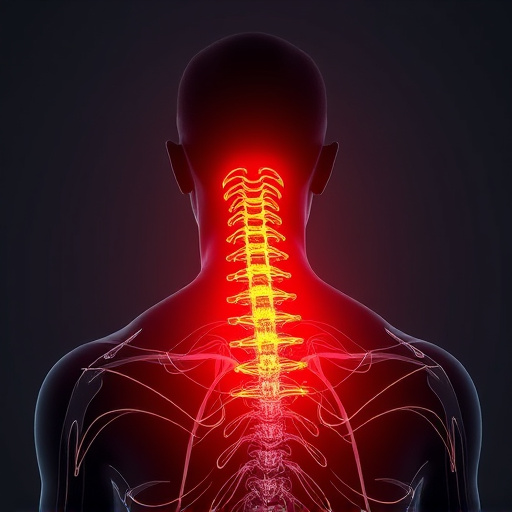
Rehabilitation exercises play a pivotal role in managing and alleviating chronic neck and back pain, offering a holistic approach to pain management. These tailored exercises focus on restoring strength, flexibility, and mobility in affected areas, reducing reliance on medications or invasive treatments. By combining specific movements with breathing techniques, individuals can experience significant relief from persistent pain.
Through regular practice, rehabilitation exercises enhance circulation, stimulate nerve endings, and promote the release of endorphins, acting as natural painkillers. This integrated approach not only provides short-term relief but also empowers individuals to take control of their long-term well-being by fostering self-management skills for ongoing pain prevention and reduction.
Therapeutic Movement Therapy: A Holistic Approach to Healing
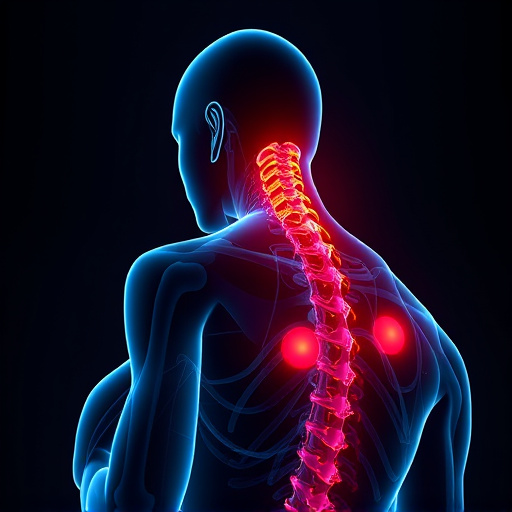
Therapeutic Movement Therapy offers a holistic approach to healing, focusing on the interconnectedness between physical movement, mental health, and overall well-being. Unlike traditional exercise routines that may isolate specific muscle groups, this therapy recognizes that pain or discomfort in one part of the body can have ripple effects throughout the entire system. By incorporating tailored movements and exercises, it aims to alleviate symptoms like neck and back pain relief while improving flexibility, strength, and balance.
This therapeutic approach goes beyond treating surface-level symptoms. It delves into the root causes of pain, considering factors such as posture, stress levels, and joint mobility. Through gentle and controlled motions, individuals can regain control over their bodies, enhance their range of motion, and reduce dependence on external aids or medications for neck and back pain relief.
Types of Exercises for Effective Relief
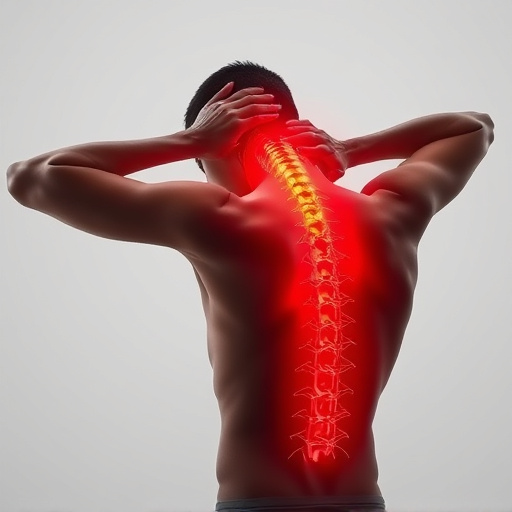
Rehabilitation exercises play a pivotal role in achieving effective neck and back pain relief, with therapeutic movement therapy offering a holistic approach to healing. A diverse range of exercises can target specific muscle groups and improve overall posture and mobility. For instance, gentle stretching exercises like cat-cow stretches help alleviate tension in the spine, while strengthening exercises such as bird dog poses enhance core stability, crucial for neck and back support.
Additionally, therapeutic movements like yoga and Pilates incorporate mindful breathing and controlled movements to reduce pain and improve flexibility. These practices not only target muscles but also promote mental relaxation, addressing the mind-body connection often overlooked in conventional treatments. By incorporating a variety of exercises tailored to individual needs, rehabilitation can offer lasting solutions for managing and overcoming neck and back pain relief.
Creating a Personalized Exercise Routine
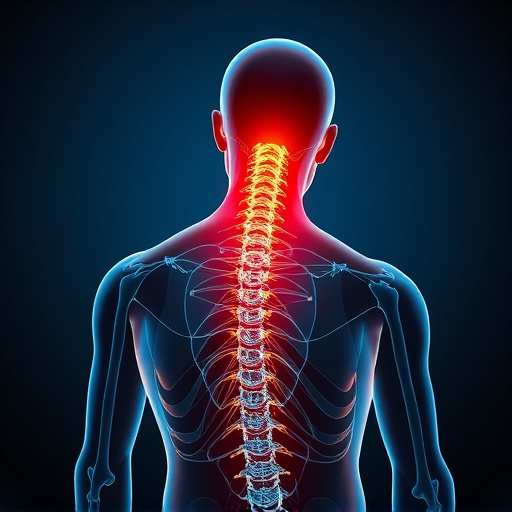
Creating a personalized exercise routine is a key aspect of managing and alleviating neck and back pain. Every individual has unique needs, and a tailored program can significantly enhance comfort and mobility. Physical therapists play a vital role in this process by assessing the patient’s condition, identifying specific areas of discomfort, and considering their medical history. This expert guidance ensures that exercises are safe, effective, and specifically targeted at relieving neck and back pain.
The routine should include a mix of stretching, strengthening, and flexibility training activities. For instance, gentle neck stretches can improve range of motion, while core-strengthening exercises help stabilize the spine, reducing strain on the neck and back. Incorporating therapeutic movement therapy techniques, such as foam rolling or yoga poses, can also prove beneficial for pain management and overall well-being.
Long-Term Benefits and Lifestyle Adjustments for Chronic Pain
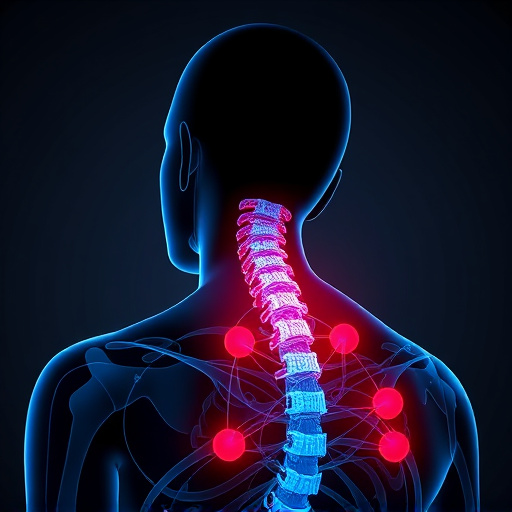
For individuals suffering from chronic neck and back pain, embracing a holistic approach through rehabilitation exercises and therapeutic movement therapy can lead to significant long-term benefits. Regular participation in such programs helps strengthen muscles, improve posture, and enhance flexibility, all of which contribute to sustained pain relief. The benefits extend beyond physical symptoms; these therapies also foster mental well-being by reducing stress, anxiety, and depression that often accompany chronic pain.
Adopting a proactive lifestyle is crucial for managing long-term neck and back pain. This includes maintaining regular exercise routines tailored to individual needs, adopting ergonomic work practices, and incorporating activities that promote relaxation and stress reduction. Additionally, developing good posture habits and learning to recognize and avoid triggers that exacerbate pain are essential components of a sustainable lifestyle adjustment plan.

